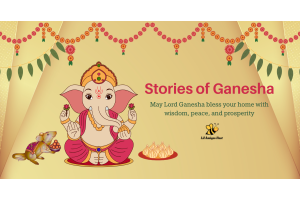Diwali Celebration Through the Four Yugas: A Journey of Tradition and Spirituality

Diwali, the Festival of Lights, is one of the most revered and celebrated festivals in India. It symbolizes the victory of light over darkness, good over evil, and knowledge over ignorance. While Diwali is commonly associated with the return of Lord Rama to Ayodhya after defeating Ravana in the Treta Yuga, this festival’s significance can be traced back through all four Yugas: Satya Yuga, Treta Yuga, Dvapara Yuga, and the present Kali Yuga.
In this blog, we will explore how Diwali celebrations evolved through these four ages, reflecting the rich history and spiritual depth of this ancient festival.
1. Diwali in Satya Yuga: The Golden Age of Truth
Satya Yuga, also known as the Age of Truth, is the first of the four Yugas and is considered the golden period where righteousness, wisdom, and harmony prevailed. In this Yuga, Lord Vishnu incarnated as Matsya, Kurma, Varaha, and Narasimha to protect the universe from evil forces.
Significance of Diwali in Satya Yuga:
- Lord Narasimha's Victory: One of the legends associated with Diwali in the Satya Yuga is the defeat of the demon king Hiranyakashipu by Lord Narasimha, an incarnation of Vishnu. This victory symbolizes the triumph of dharma (righteousness) over adharma (evil).
- Lighting of Lamps: To celebrate this divine victory, people lit lamps, symbolizing the removal of darkness and the restoration of cosmic order.
During Satya Yuga, the festival of lights was observed as a time of divine worship and reverence, where people meditated and performed yajnas (sacred rituals) to maintain cosmic balance.
2. Diwali in Treta Yuga: The Age of Lord Rama
Treta Yuga, the second of the four Yugas, is when the epic Ramayana took place. The most well-known legend associated with Diwali comes from this period, where Lord Rama returned to his kingdom, Ayodhya, after 14 years of exile and defeating the demon king Ravana.
Significance of Diwali in Treta Yuga:
- Return of Lord Rama: The people of Ayodhya welcomed Lord Rama, Sita, and Lakshmana by lighting thousands of diyas (oil lamps) to celebrate his victory and homecoming.
- Victory of Good Over Evil: Diwali in Treta Yuga represents the eternal victory of good over evil, symbolized by Lord Rama's triumph over Ravana.
To this day, the Diwali celebration continues to honor Lord Rama's return by lighting lamps, bursting crackers, and performing Lakshmi Puja, invoking prosperity and happiness.
3. Diwali in Dvapara Yuga: The Age of Lord Krishna
Dvapara Yuga is the third Yuga, during which Lord Krishna, an incarnation of Vishnu, played a significant role in the Mahabharata. In this Yuga, another important Diwali legend comes to light—the defeat of Narakasura, a demon who terrorized the heavens and earth.
Significance of Diwali in Dvapara Yuga:
- Victory of Lord Krishna: The day before Diwali is celebrated as Naraka Chaturdashi, marking Lord Krishna's victory over Narakasura. According to legend, Narakasura had kidnapped 16,000 women, and after his defeat, Lord Krishna freed them, restoring peace and righteousness.
- Celebration of Freedom: Diwali in Dvapara Yuga symbolizes the liberation of these souls and the establishment of dharma once again. The festival was marked by lighting lamps, bursting fireworks, and celebrating with joy and feasts.
The story of Lord Krishna’s victory continues to inspire people to celebrate Diwali as a triumph of light over darkness, spreading joy and positivity.
4. Diwali in Kali Yuga: The Age of Darkness
We are currently living in Kali Yuga, the final and most challenging of the four Yugas. It is known as the Age of Darkness, where adharma (unrighteousness), materialism, and ignorance are rampant. Yet, even in these challenging times, Diwali remains a beacon of hope, joy, and spiritual renewal.
Significance of Diwali in Kali Yuga:
- Goddess Lakshmi’s Blessings: In Kali Yuga, Diwali is primarily celebrated to invoke the blessings of Goddess Lakshmi, the goddess of wealth and prosperity. People perform Lakshmi Puja on the night of Diwali to welcome wealth, happiness, and success into their homes.
- Victory of Light Over Darkness: In the midst of the struggles and materialism of Kali Yuga, Diwali serves as a reminder to turn towards the light of knowledge, kindness, and spiritual growth. The festival encourages people to reflect on their inner selves and strive for righteousness.
Even in Kali Yuga, Diwali continues to be a celebration of hope, where lighting diyas represents dispelling the darkness of ignorance and ushering in the light of wisdom.
Common Traditions Across the Four Yugas
While the stories and legends behind Diwali may vary across the four Yugas, the core traditions remain largely the same, reflecting the timeless values of the festival:
- Lighting of Diyas: Symbolizing the removal of darkness and ignorance.
- Lakshmi Puja: Invoking the blessings of Goddess Lakshmi for prosperity and happiness.
- Feasting and Sweets: Diwali is celebrated with lavish meals and sweets, fostering a spirit of togetherness and joy.
- Bursting Firecrackers: Traditionally used to ward off evil spirits, firecrackers are now a central part of the Diwali celebrations.
Conclusion
The celebration of Diwali has transcended the boundaries of time, adapting to the changing eras but always maintaining its core essence. From the Satya Yuga, where divine forces restored cosmic order, to the Kali Yuga, where the festival brings light and hope amidst darkness, Diwali has remained a symbol of good triumphing over evil. As we light our diyas this Diwali, let’s remember the rich history and spiritual depth that the festival carries through the ages.
Celebrate Diwali 2024 with joy, light, and an understanding of its profound spiritual significance across the four Yugas. Happy Diwali!


























